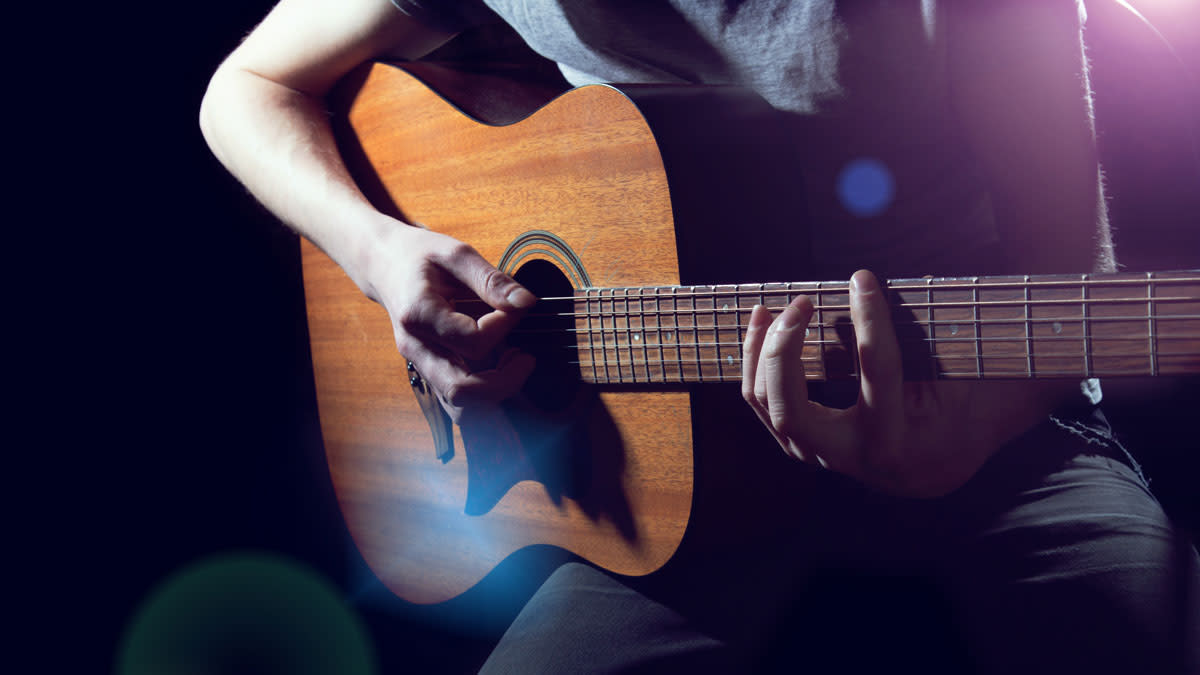How should you learn guitar scales – and why should you bother?

Using scales to make music is more than just choosing the right one. But how does one go about practicing scales, and should you bother?
Using my favourite analogy, if music is a language then scales are alphabets. With our English alphabet we can make words from many languages, though each will have quirks particular to its dialect. Other languages are narrower in use, the Mkhedruli language of Georgia for instance, which can be understood in much more limited areas.
In music, the major scale can be used in many different styles and ways, whereas a more exotic scale like the Phrygian Dominant is usually used in a specific situation. Bear with me while we take it a step further…
If you become fluent in English, does it mean you can speak French or German, which uses (mostly) the same letters? No, it’s the combinations of letters that changes, and the pronunciation. Some scales fit well in a specific style and others in a more general sense, but people who master one style often find it leaves an ‘accent’ when they try to play others.
The point is that the words matter the most. You can’t travel somewhere new and start saying the alphabet. Yo learn words and phrases and with them you would be communicating. In music, the words are the licks and phrases. Play a blues lick and people know you’re ‘speaking’ blues. But play a minor pentatonic up and down, and it could be anything.
Yes, the analogy has holes when you keep prodding it, but it’s a great way to develop your strategy for learning music. When I was the admissions guy at The Guitar Institute, some young dude would come in and show that they knew all the scale patterns… but couldn’t make music if their life depended on it. And I met others who knew no scales at all, but knew a handful of licks that they could use well. They were making music!
So, licks and phrases – learn them! Great poets use the same words we all use, they just put them together in more beautiful ways. If they made up their own language nobody would understand it. Egdhtg hdgft wrreyu chzhn. Get my point?
So why would guitarists practice scales at all? Well, there are a few good reasons. To understand the grammar of the language, it will help to know the alphabet. Learning scale patterns will help you change and manipulate licks, extend them, be curious with them. It's study, for the mind, more than the fingers.
If you want to express ideas you hear in your musical imagination then practicing scales can help build a map for your fingers to find the sounds that you hear. I would recommend using the major scale for this, paying attention to the sounds and intervallic relationships in the scales.
But exploring in this way is more like improvising within a framework of a scale, and exploring, trying things out, and listening. But I know you see people playing scales up and down with a metronome. I did that for years too, but if I could take all those thousands of hours back and focus on making music instead, I would, in a heartbeat.
If you want to practice scales in a way that might help you make melodic statements, I recommend practicing scales in intervals
Using a metronome can be very helpful for developing the synchronicity of your two hands, and can help (to a lesser extent) with the mapping and mental pattern development. It can also help develop your time feel and subdivisions. But if you want to practice scales in a way that might help you make melodic statements, I recommend practicing scales in intervals.
Melodies generally follow chord tones, and chord tones are (mostly) stacked in 3rds. If you practice playing scales in 3rds you are training yourself to play more melodically, naturally finding the chord tones and extensions of the names you land on. You’re training your fingers, mental maps and musical imagination. But practicing only that would probably make you a very tedious player. So I’d advise also exploring 4ths, 5ths, and melodic sequences.
When I practice scales there are days I start with one run up and down a scale pattern. Then I go in 3rds (usually four times) then a couple of times on 4ths and 5ths to encourage my fingers to head to less common intervallic jumps. Then I’ll often explore a melodic sequence, a number sequence applied to a scale.
Number the degrees of a scale starting with 1 on the root and going up as high as you can in that pattern. A melodic sequence like 1-3-5-7-6-5-4-3 is good – it ascends a diatonic arpeggio and descends the scale. Then I’d do the same pattern starting on the 2nd scale degree - 2-4-6-8-7-6-5-4, then from the 3rd etc.
Another favourite is reverse alternate 3rds, so the numbers would be 1-3, 4-2, 3-5, 6-4 - going up a 3rd, up to the next scale tone and then down a 3rd, up a scale step, etc. There are a bunch of other common sequences on my website if you get stuck for ideas.
Melodic patterns are IMHO the best way to explore scales. I still hold that learning licks and phrases provides the most benefit, but working on scales feeds your fingers, brain and musical imagination. Have fun!

